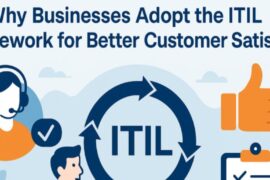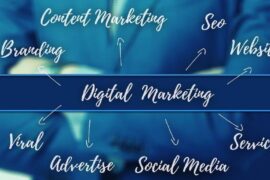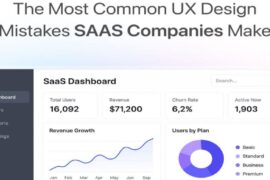In the current digital era, where users’ attention spans are short, and competition is intense, web design simplicity is more important than ever. Consumers want experiences that are easy to use, fast to grasp, and visually appealing. They want the website’s navigation to be done with the least amount of work.
Though they may look impressive at first, complex designs can lead to confusion and dissatisfaction. On the other hand, a straightforward design boosts user happiness overall, increases engagement, and improves usability. Some of the most important arguments in favor of a straightforward website design are covered in this article.
Clarity and Ease of Use
Clarity and usability are directly enhanced by simple site design. A well-designed website should lead visitors easily to the information or activity they’re looking for.
A user may become overwhelmed by a website that has too many features, complex menus, or overwhelming amounts of material. Users who are using simple designs have less cognitive strain and are able to focus on what matters most.
The phrase “website usability” refers to how easy it is to use a site. It is important, as many consumers base their view of a brand just on their interaction with the company’s website. This highlights the importance of user experience (UX).
Your conversion rate will increase if you adhere to usability guidelines for your website to make it easy for people to navigate. When your checkout process is smooth, more visitors linger on your website, click on your calls to action, and finish their purchases.
Any website’s main objective is to assist its users. User experience must come first in website design, regardless of the site’s goals (entertain, sell, or inform). This is made possible by simplicity, which gets rid of pointless distractions and makes sure that every component has a distinct function.
Faster Loading Times
Faster loading speeds are among the most important technical advantages of simple web design. As stated by Search Engine Land, it is a part of Google’s Core Web Vitals. It means that a page’s speed and viewer experience are intertwined. It goes without saying that if your site loads slowly, visitors will go.
So, even if your website’s page ranks high on the search results due to relevant content, people might not interact with it. That’s because, with an increased loading time, people will simply bounce back from your website due to poor experiences.
Excessive graphics, animations, and complex coding might cause a website to load slowly and perhaps lose visitors. Even though Google has removed page speed from its ranking page document, slow loading can still impact user experience. Thus, even a brief delay might cause lost traffic and a decline in conversion rates at a time when consumers want instant gratification.
Fewer components, less code, and optimized media are the hallmarks of a simple design, which all help to accelerate load times. This improves user experience and has a positive impact on search engine results. Websites that load quickly are preferred by the audience, as they provide better experiences, which is a significant ranking factor.
Enhanced Mobile Experience
The increasing ubiquity of mobile internet usage has made designing for smaller displays imperative. According to Statista, the global mobile device website traffic has been constantly increasing for several years now. It went from 31.16% in the first quarter of 2015 to 54.57% in the fourth quarter of 2023.
Moreover, it is expected that this percentage is going to increase proportionally to the global population. The newer generation prefers using their mobile phones to browse the internet. Thus, it will also become important for web designers and SEO experts to make their websites mobile-friendly.
Additionally, this presents fantastic commercial potential, particularly in relation to local SEO. Consider the example of Nashville, where a lot of people moved in 2022. A Nashville Area Chamber of Commerce article states that the city’s metropolitan area population grew by 35,624 people. This is calculated to be roughly around 98 people per day.
With the growing population, local businesses can attract more audience to their website with mobile-friendliness. They can connect with a local Nashville design agency to make their site mobile-friendly, so it engages users even on a smaller screen. A local design agency will also be able to implement the latest design trends in the locality to make the site more appealing.
As stated by Huckleberry Branding, a reputable design agency can build completely custom designs for you. These designs can reflect your brand’s vision and ensure optimal engagement with the users. Better mobile experiences are a natural result of simpler web designs. A disorganized layout might be much more challenging on a small screen than it is on a desktop.
Responsive design is the standard approach to accommodating different screen sizes, but simplicity remains key. A straightforward style makes it easier for different devices to adjust, guaranteeing a consistent and pleasurable user experience across all platforms. On mobile devices, where space is restricted, understandable writing and clear, succinct navigation are especially crucial.
Better User Engagement
Engagement is the most crucial measure of a website’s performance. If a website is easy to use, visually appealing, and has clear messaging, users are more likely to stay on it and take action. On the other hand, around 38% of people will not interact with a website with an ugly look.
Whether the goal is to make a purchase, subscribe to a newsletter, or spend more time on the website, the secret is to keep things simple. When they can get what they need quickly and simply, users are more inclined to return. Positive experiences, in the long run, nurture trust and loyalty, which are critical components of any business.
Improved Accessibility
All users, even those with impairments, can browse and comprehend a basic design more easily. It may be challenging for those who use screen readers or have mobility impairments to traverse intricate designs with plenty of interactive elements. Designers may develop experiences that are more inclusive and appeal to a larger audience by emphasizing simplicity.
For example, simple navigation and links with descriptive text make it easier for screen readers to understand and communicate information. Users with visual or cognitive disabilities benefit from high-contrast writing, basic forms, and easily navigable buttons. A website that is made with accessibility in mind is easier for people to use and more inclusive.
Forbes notes that it is essential that all customers can easily access your website. Consider the scenario when a prospective consumer is waiting outside your business premises, eager to make a purchase. However, they are unable to go through the front door as your online store is somehow locked for them.
If your company’s website isn’t accessible, 26% of Americans who live with disabilities will be shut out of it. You would not want this to happen, especially considering that they have a combined disposable income of $1.28 trillion.
Frequently Asked Questions
What is the value of simplicity in design?
When executed well, minimalist design has several advantages: Simple to use functionality. Simplicity reduces complexity so that things are naturally simple to use and navigate. Essential features are accessible and evident.
Why is simplicity important in navigation design?
You may make a design that is both streamlined and elegant by concentrating on the important components and eliminating the extraneous ones. Users can locate what they need fast and easily if you design a clear and simple navigation system.
How does web design impact customer experience?
The anticipation that clients have when obtaining services is known as the customer experience. That speaks to how clients view the business. In this instance, creating the client experience is greatly aided by the website.
In web design, simplicity is a purposeful strategy that improves accessibility, usability, and engagement. Easy and rapid access to the information customers need is ensured by a straightforward design, which improves customer experience and conversion rates. Businesses also gain from it as it offers a timeless, scalable, and manageable solution that nurtures long-term growth.































